Want more composting resources? Check out these websites
“Compost Tips for the Home Gardener”
UF | IFAS Quick Composting Tutorial

Residents within the City of Tampa’s Solid Waste service area, as pictured below, who have an active solid waste account are eligible to take a free composting workshop. Upon completion of all the required steps outlined during the workshop, residents will then be able to receive a free backyard composting bin. Before registering please verify eligibility using the City Limits Map.
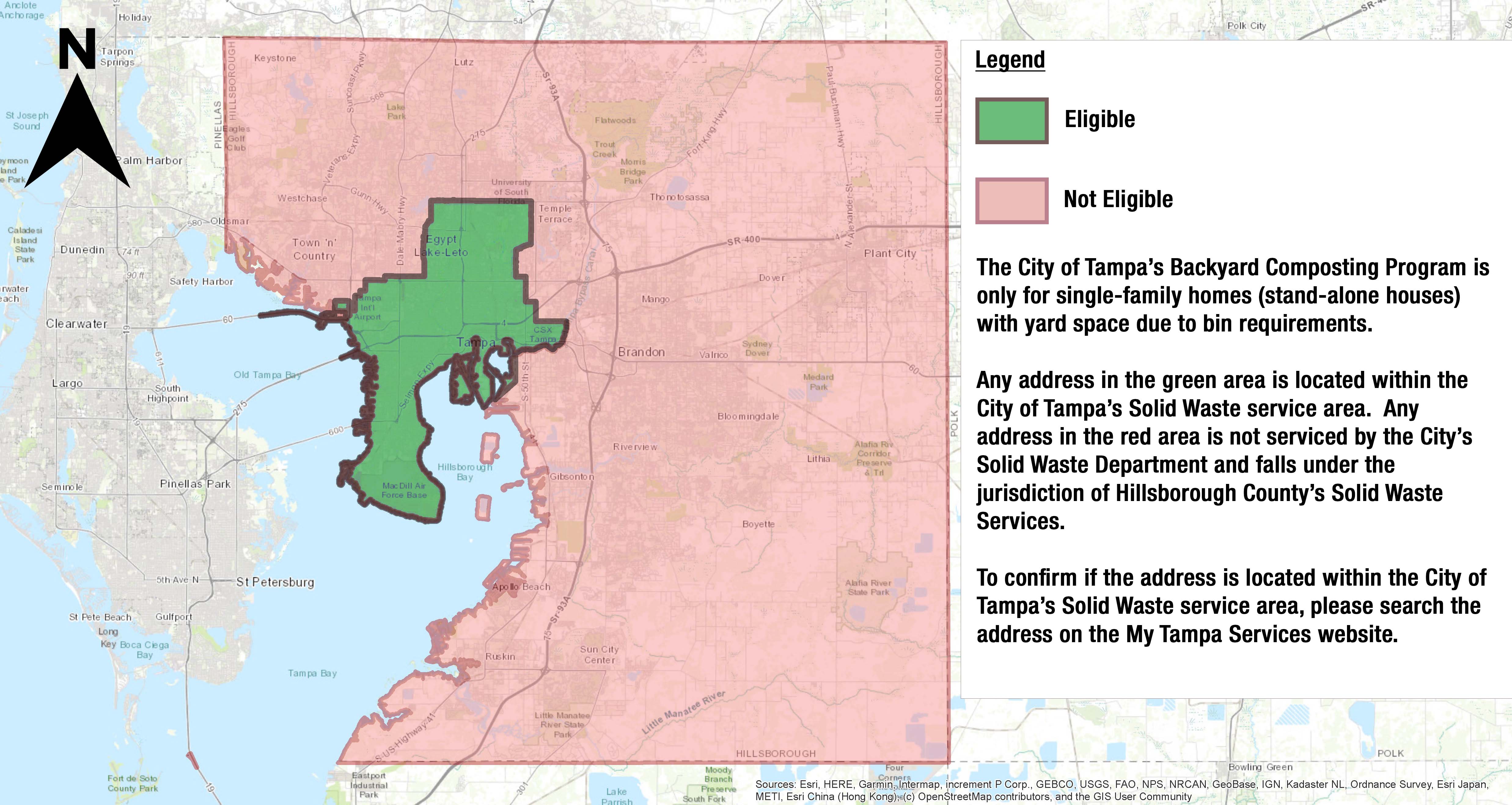
If residents have a blue trash cart and green recycling cart that has a City of Tampa logo they most likely have an active account with the City of Tampa’s Department of Solid Waste and Environmental Program Management. Residents can confirm their waste service provider using the City Limits Map.
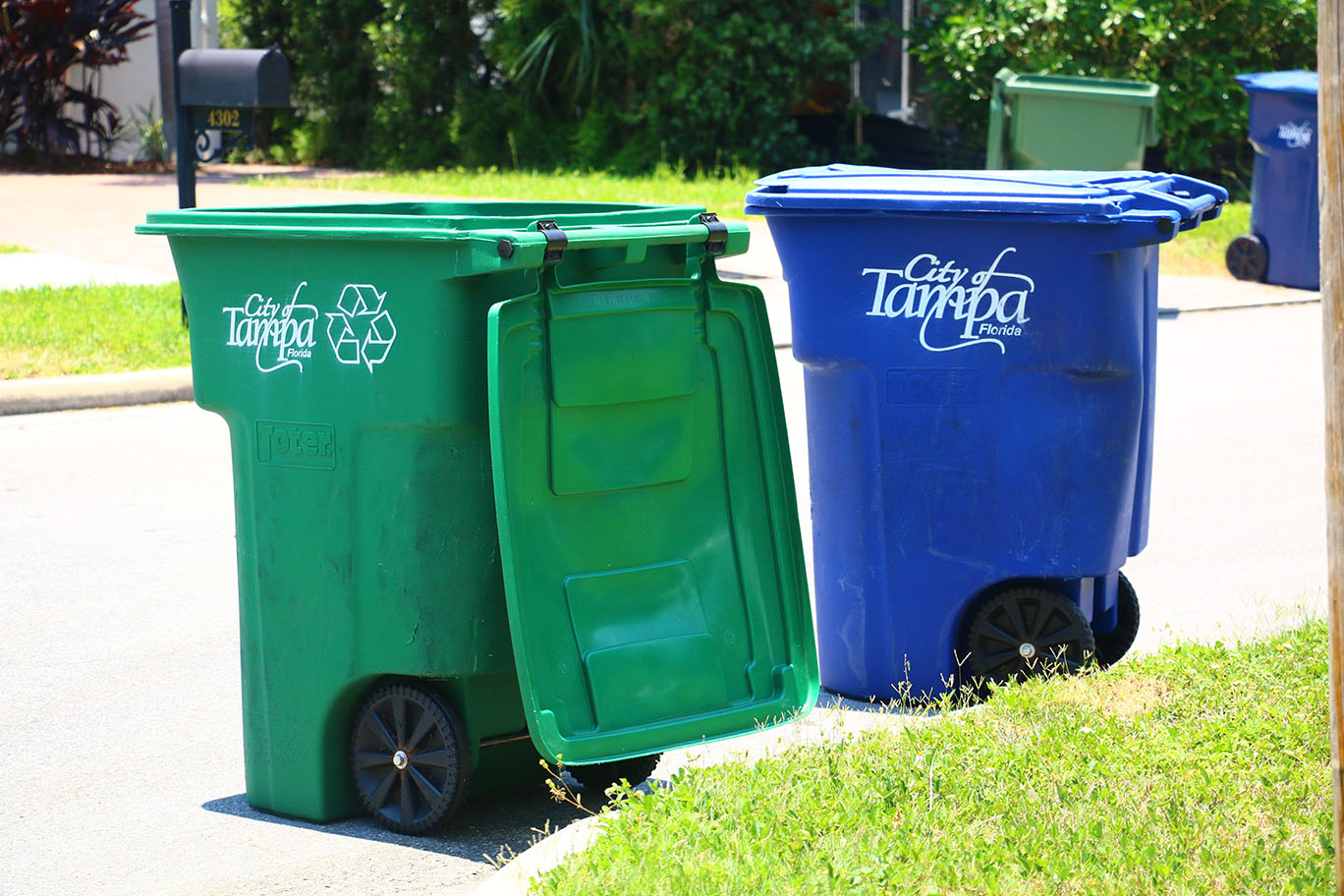
Through the Backyard Composting Program the City provides eligible households with an 80-gallon Earth Machine compost bin. This bin requires a minimum 3-foot by 3-foot area over soil or grass for composting. Learn more about the specifications from the manufacturer.
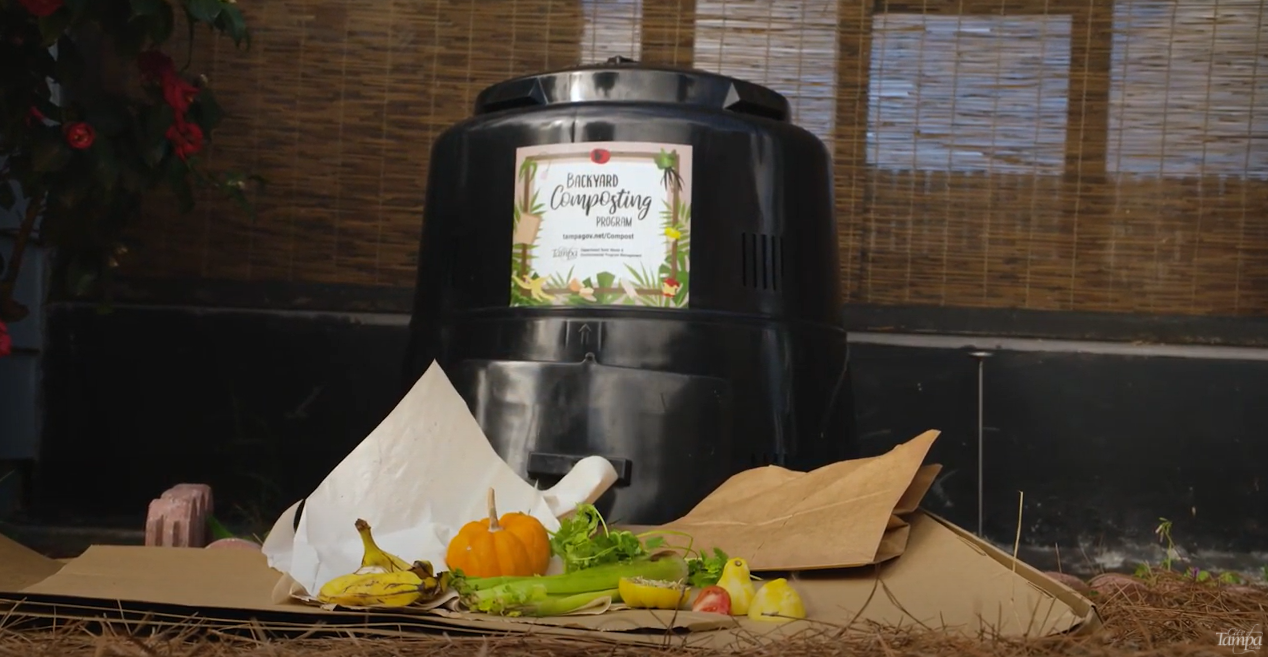
Upon completion of all the required steps outlined during the workshop, residents will receive a free backyard composting bin within 14 days after the date of the workshop. The bin will be dropped off on the front curb of the resident’s household by a City vehicle.
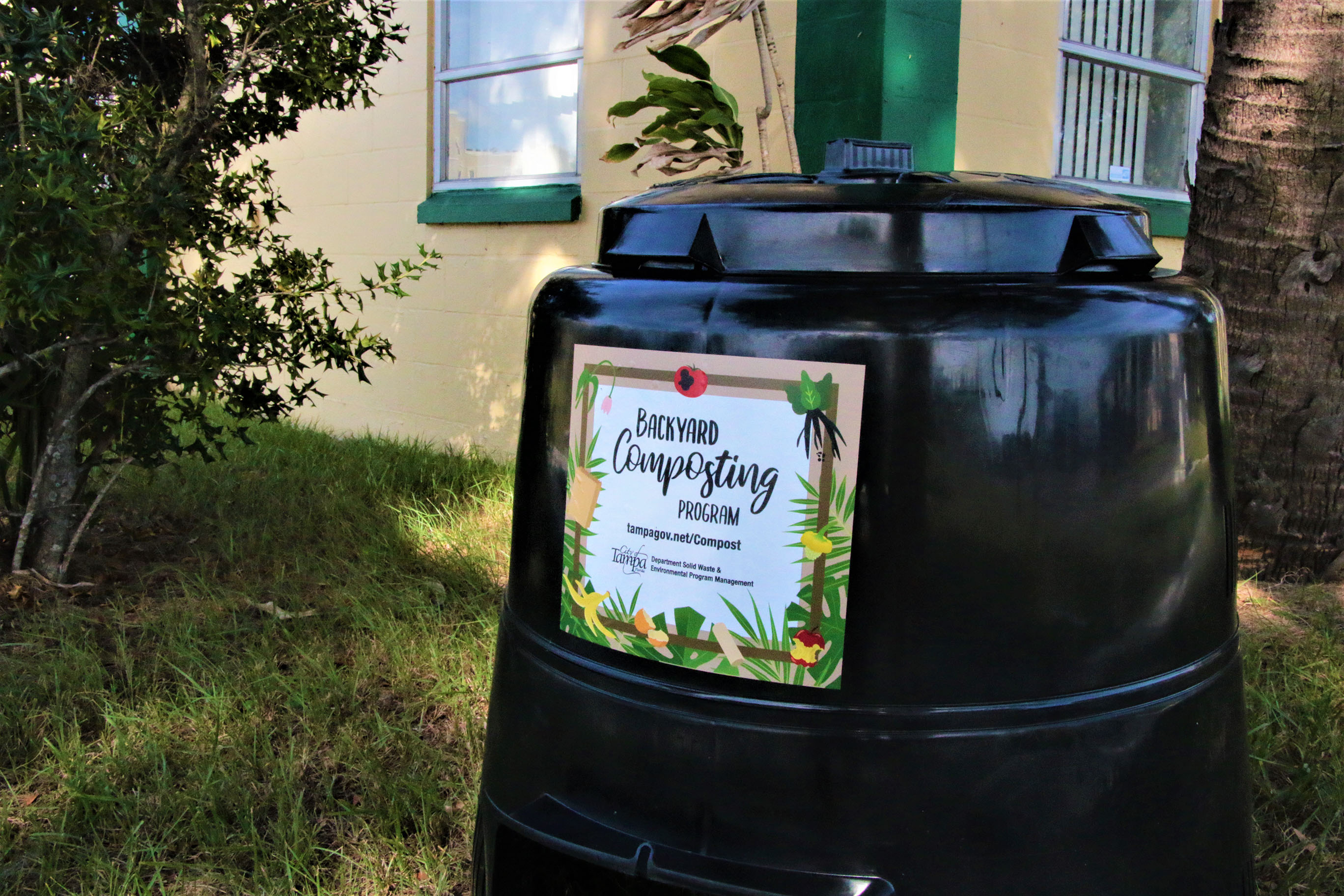
If a resident is moving or is no longer using the compost bin, please call the City of Tampa Utility Services Customer Care Center to schedule a pickup. Empty and rinse out the bin, making sure the top lid, harvest door, and ground screws are attached. The City will pick up the bin so it can be used by another resident.
Residents can compost by building or purchasing a bin or building a pile. There are a large variety of compost bins available, one for every space and management style. Types can include three-bin systems, tumblers, covered bins, concrete blocks, wood bins, and more. A good resource and some instructions on how to build the different types of composting enclosures are offered by the UF|IFAS Extension Office.
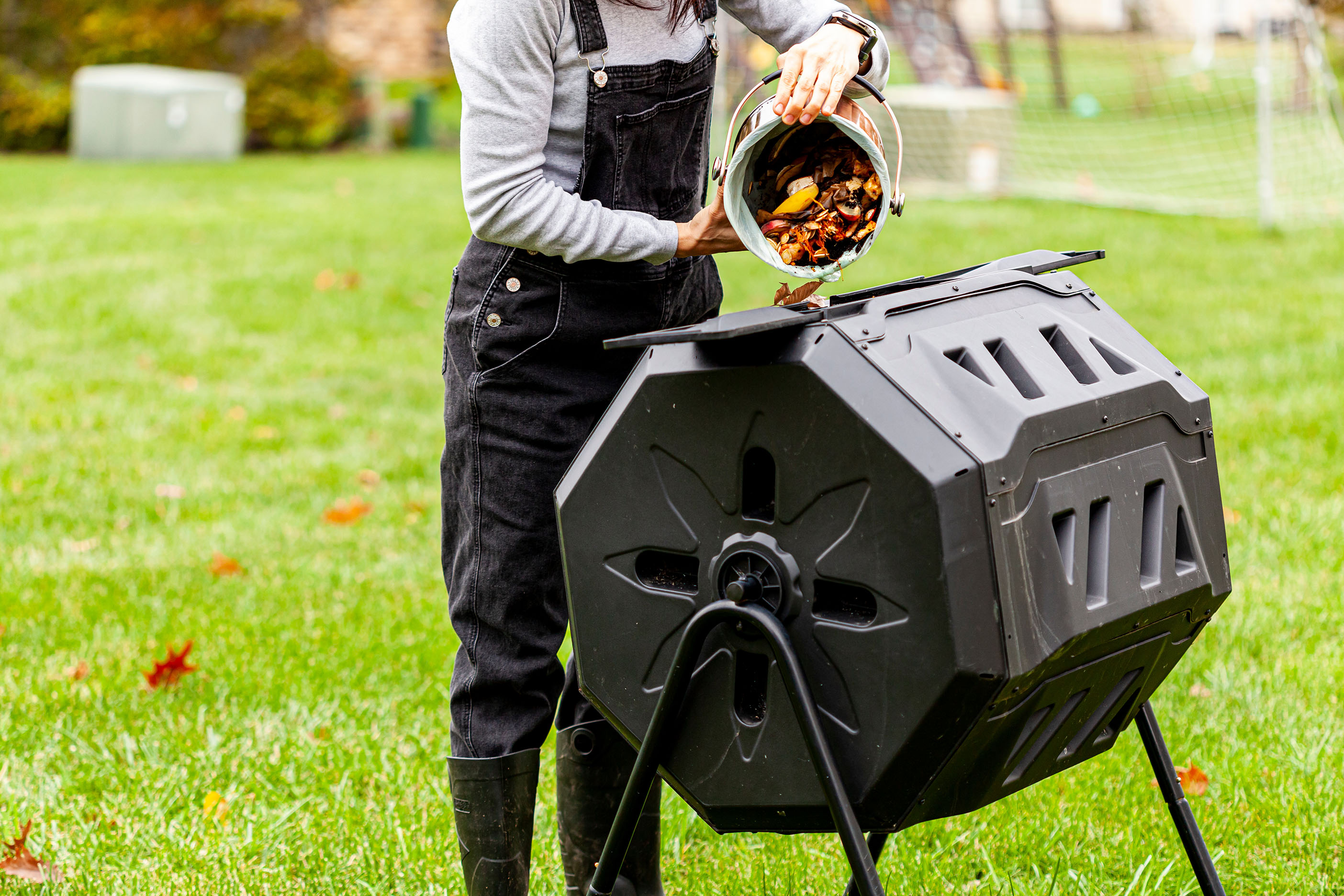
Managed, expedited natural breakdown (decomposition) process of select organic waste. Microorganisms break down select materials into compost with the presence of carbon, nitrogen, air, and water.
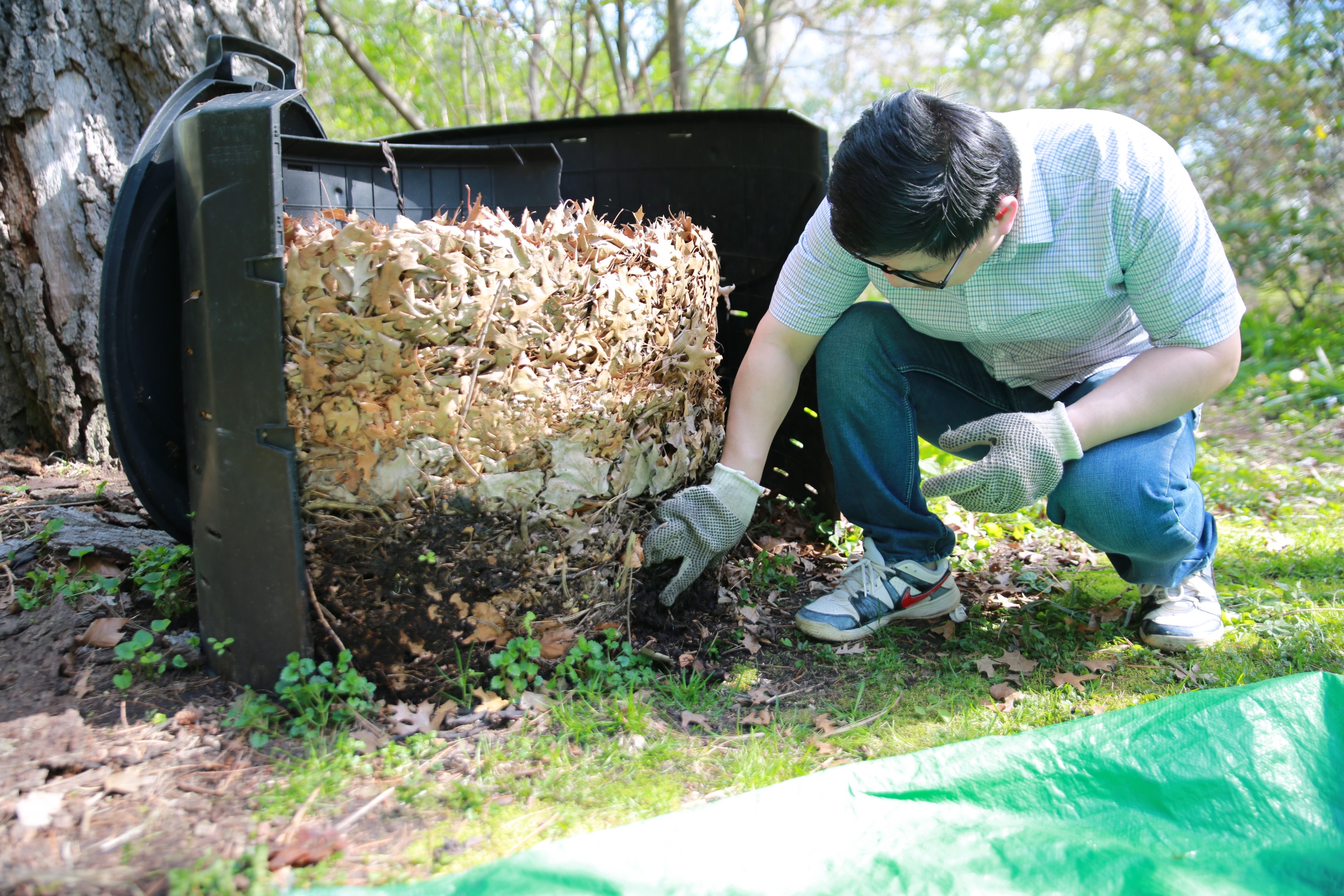
Organic is commonly used to describe the production system and certification used for food items such as produce and meat products. However, the organic waste that is referred to in the composting process means something different.
Organic waste is something that was once a living thing or a byproduct of a living thing. Examples can include paper that was made from a tree, vegetables, or hair from a mammal. Inorganic waste comes from a nonbiological source, meaning something that has never been living or was created from something that was alive millions of years ago. Examples include glass (which is made from sand) and plastic (made from fossil fuels).
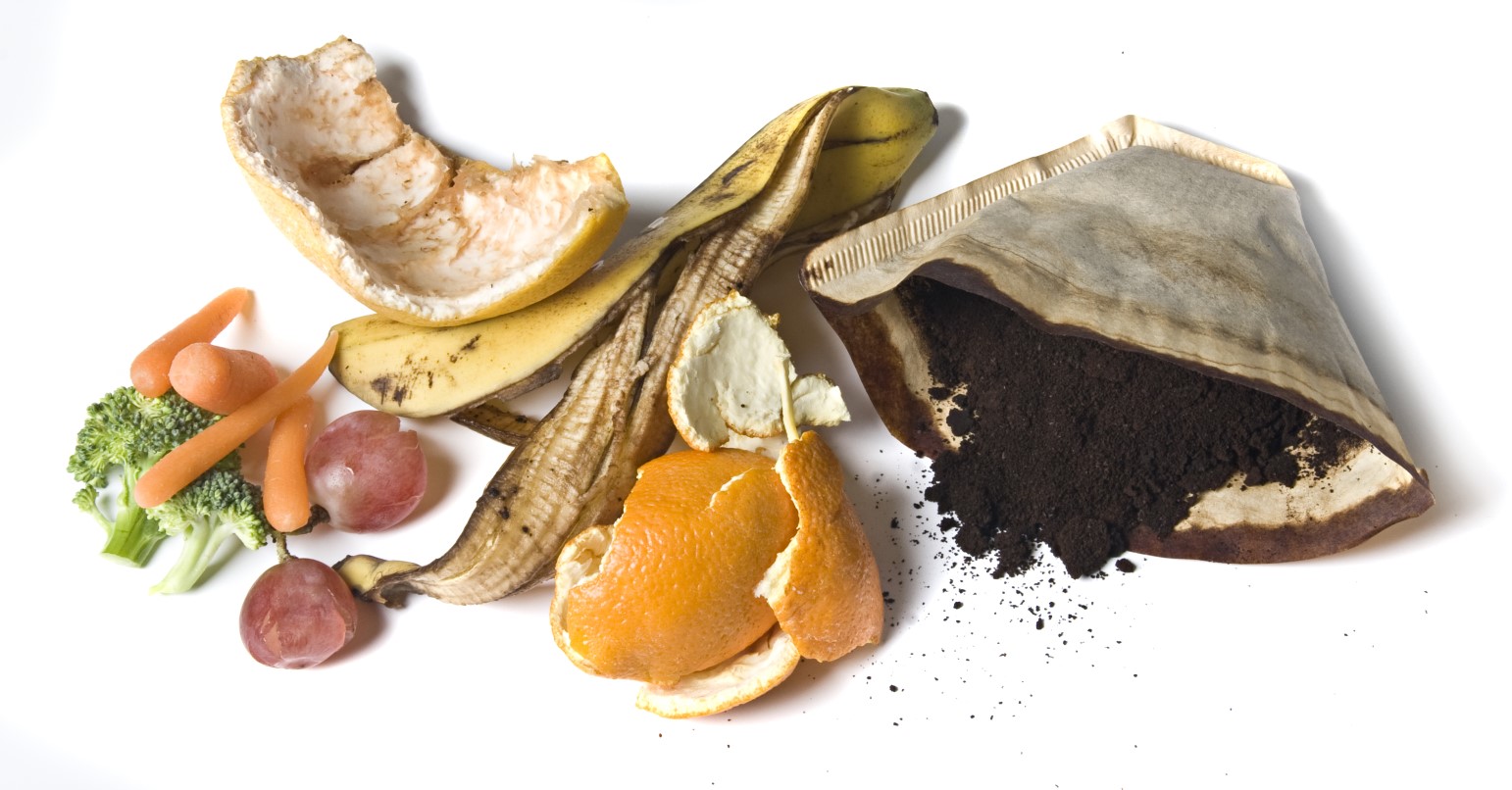
The type of composting that is done with the bins provided by the City of Tampa is backyard traditional composting. Composting with worms is called vermicomposting and requires a different management style to be successful. Worms do not need to be added to traditional composting, but they may naturally find their way in and out of a pile. Commercial or industrial composting is done on a larger scale with different management practices and tools, therefore expanding the list of accepted items to often include things like animal products and bioplastics.
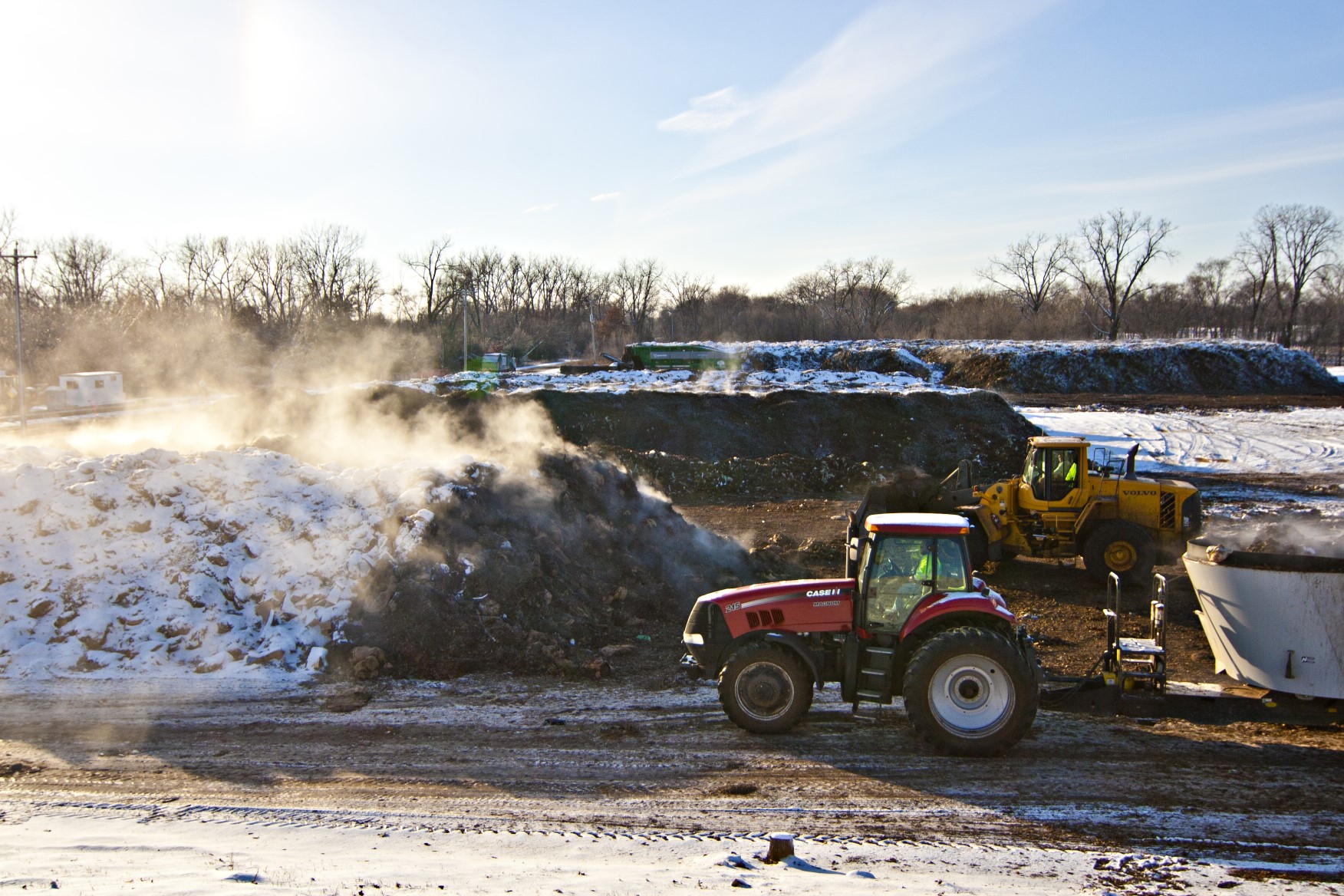
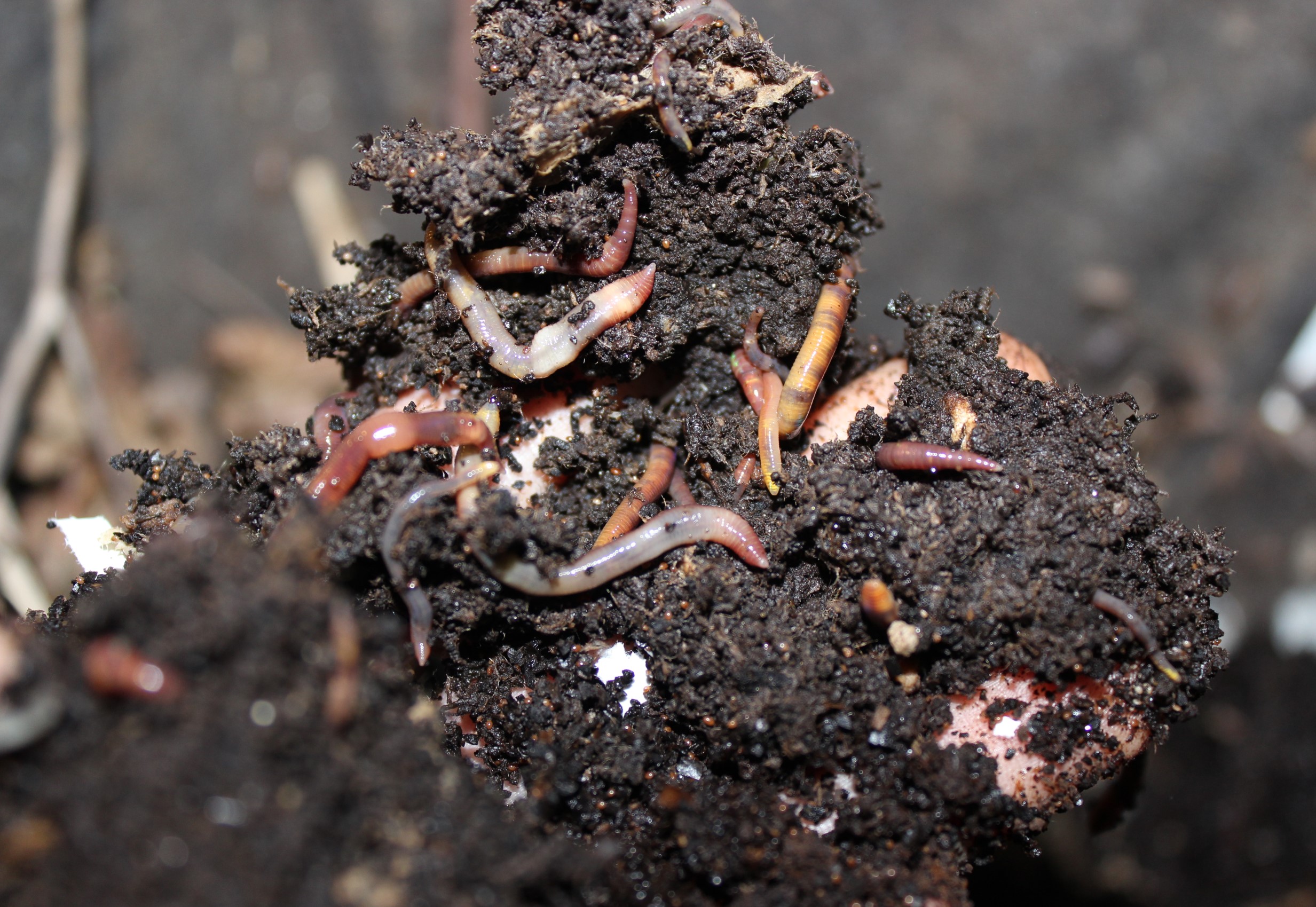
According to the US Composting Council, other benefits can include preventing soil erosion, assisting in stormwater management, promoting healthier plant growth, conserving water, reducing waste, combating climate change, reducing maintenance costs, improving soil health, and assisting in wetland reclamation.
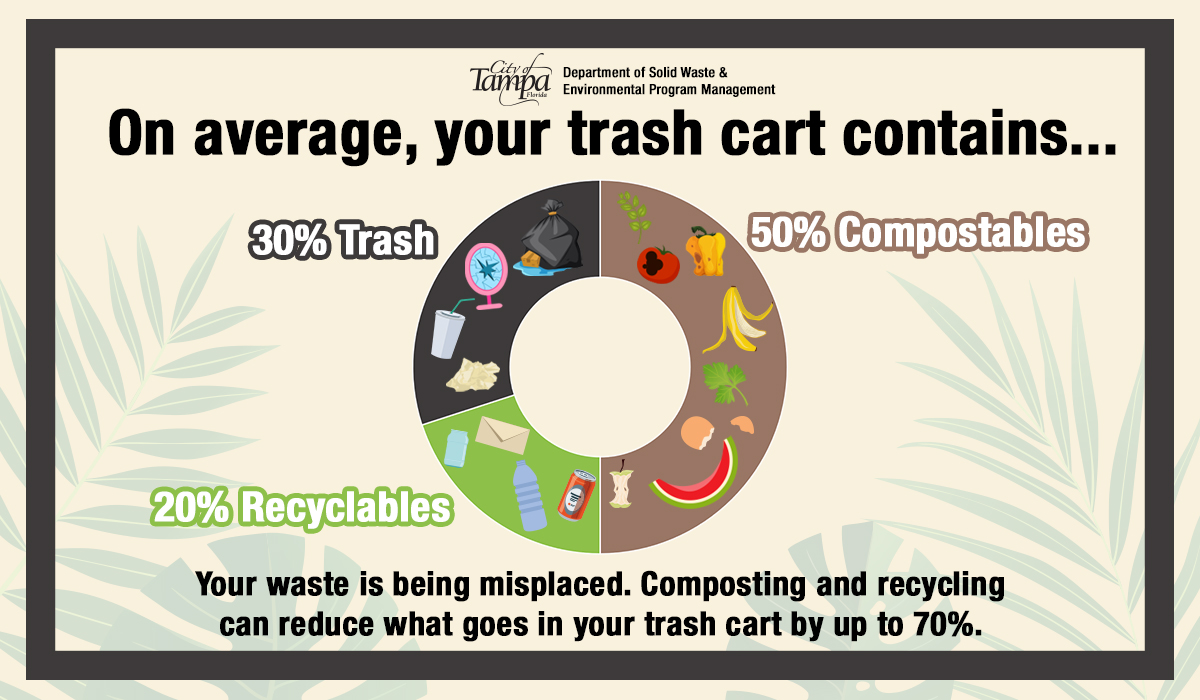
Create compost tea: steep burlap/filter bags of compost in a bucket with water overnight and water plants.
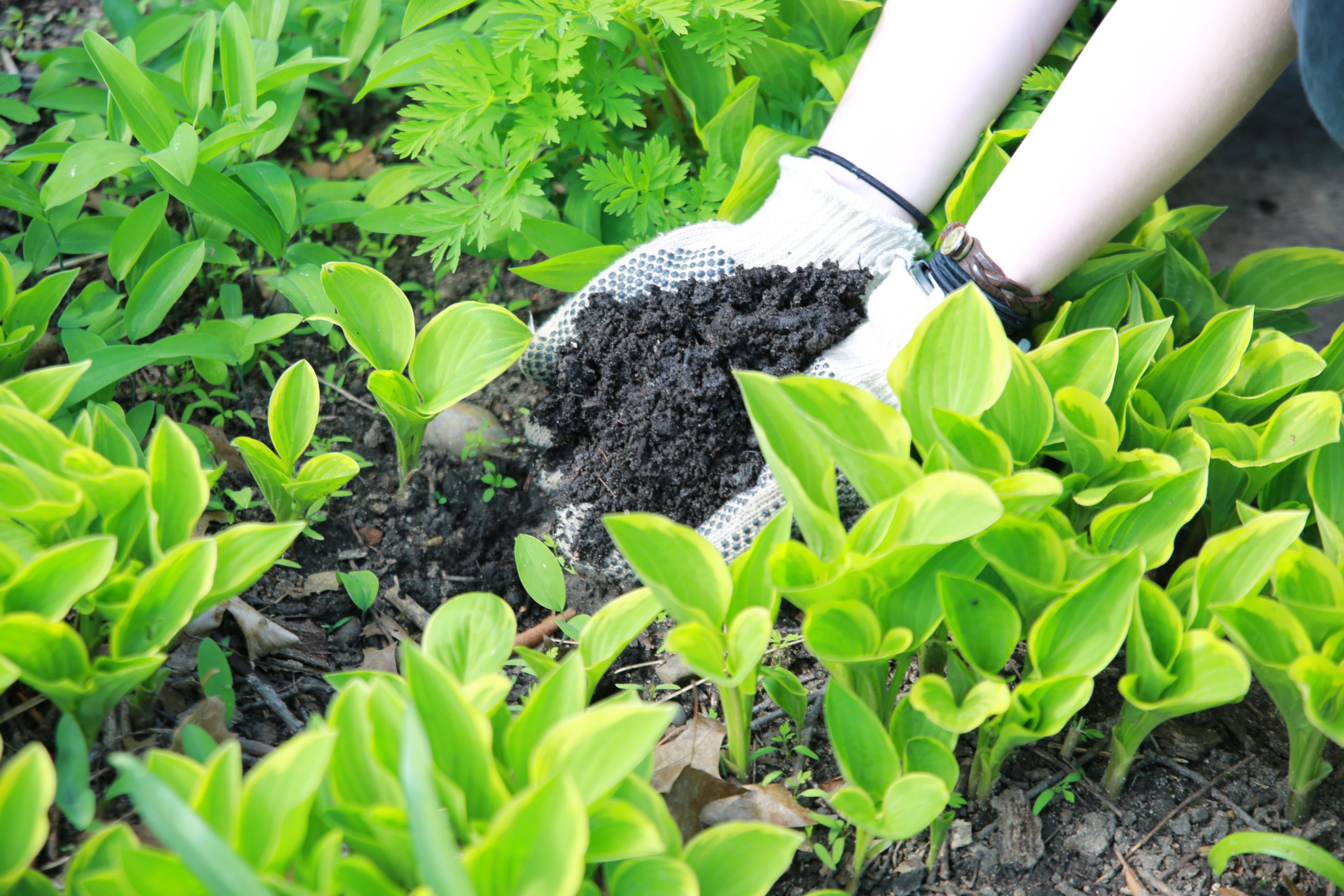
If managed properly, compost should not contribute to any foul smells. It should have a relatively neutral earthy smell. If your pile smells sour or unpleasant, it most likely needs to be turned for aeration or has too much moisture. Please refer to the pile management section below to review best practices that can be applied as a solution to the odors.
![]()
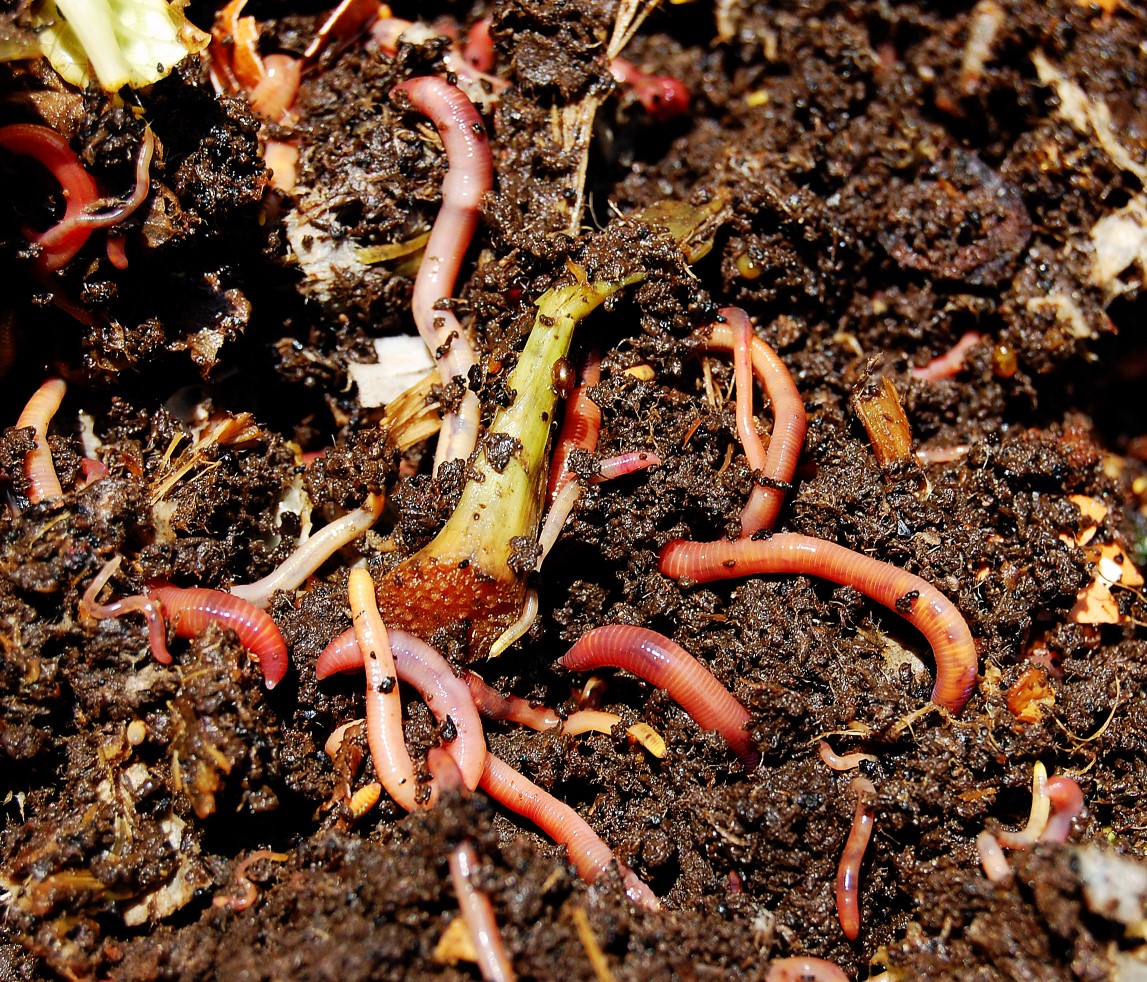
The type of organisms in compost can be broken down into two categories: microorganisms and macroorganisms. Microorganisms are things that cannot be seen with the naked eye and include things such as bacteria and fungi. Macroorganisms are things that can be seen with the naked eye and can include things such as worms and insects. These organisms are "decomposers" that have evolved to break down materials into smaller particles. These “bugs” are considered friends, not foes, to the composting process. Although most are beneficial, certain organisms can be indicators for problematic conditions in compost piles.
Browns are a source of carbon which acts as an energy source for the microbes. Common examples include paper, leaves, and cardboard. Greens are a source of nitrogen and contain the proteins the microbes use to build their bodies. Common examples include fruit and vegetable scraps, coffee grounds, and hair. For a recommended list of Browns and Greens visit our main Composting page.
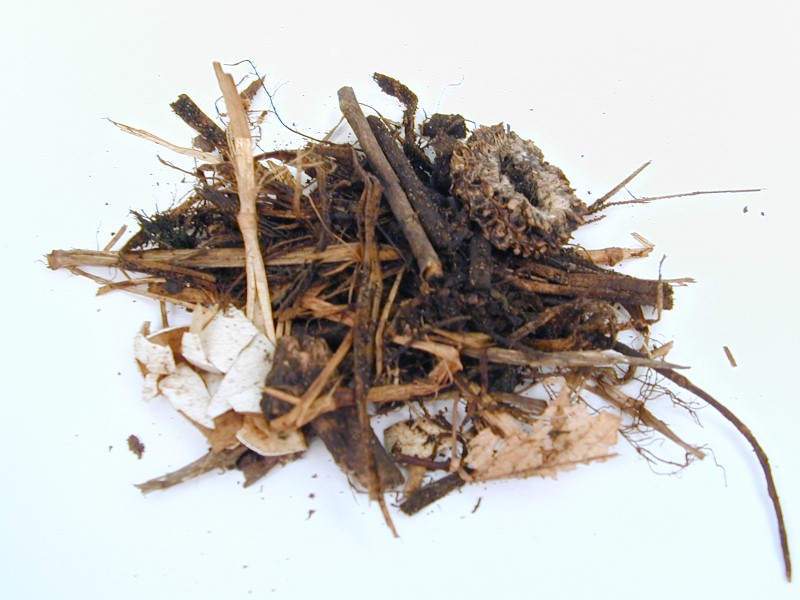
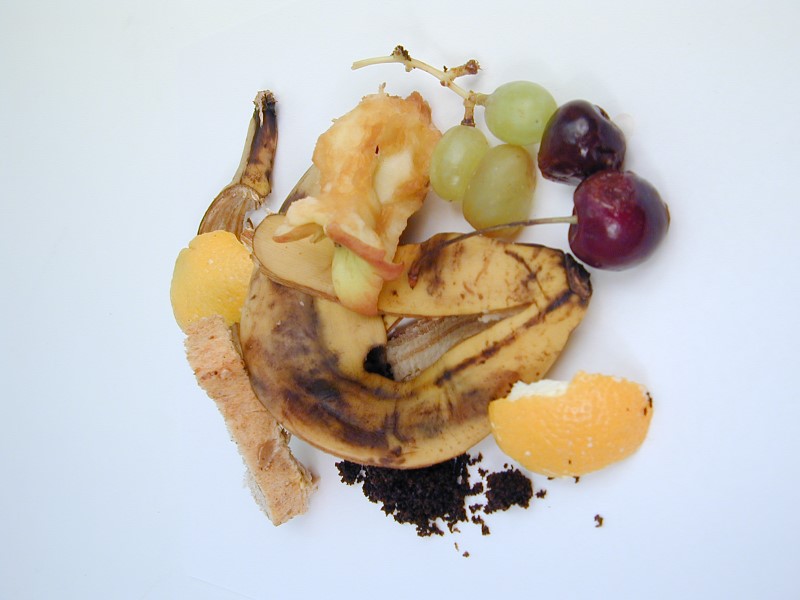
The City recommends adding items that have proven to have the greatest rates of success and the least amount of risks. This list is not meant to be complete but includes some of the most common and effectively composted items in a backyard compost system.
The items below pose high risks and complications to a backyard compost system. Although some people and organizations may claim to have success composting some of the items below, the City does not recommend adding these for the reasons explained below.
Bioplastics - Home compost piles often do not reach the temperature needed to break down bioplastics in a reasonable timeframe. Therefore, they are often only accepted in industrial composting facilities. Bioplastics are also not accepted in the City of Tampa’s recycling program. For these reasons, the best steps to take are to prioritize the refusal and reduction of single-use items and support reuse systems.
Bones & Meat - Animal products can create odor problems and attract pests such as rodents and flies in backyard compost systems.
Cat Litter & Dog Feces - It is not advised to add these items to backyard compost systems because these items might contain parasites, bacteria, germs, pathogens, and viruses harmful to humans.
Cigarettes - Cigarettes contain plastic filters that will not break down in compost and certain chemicals that have been shown to inhibit plant growth.
Coal & Charcoal Ash - Coal and charcoal can contain toxic chemicals and may leach these into edible vegetation and water supplies.
Dairy Products - Animal products can create odor problems and attract pests such as rodents and flies in backyard compost systems.
Dryer & Vacuum Lint - Although it may not be obvious to the naked eye, most textiles are either completely made of synthetic fibers or a blend of synthetic and organic fibers. Common petroleum-derived synthetic fibers include polyester, elastane, nylon, and rayon. Due to how common these fibers are in clothing, furniture, and carpeting, it is not recommended to add lint or dust from household uses as these fibers are non-biodegradable and can introduce microplastics into the compost pile.
Diseased or Insect-Ridden Plants - These items are not recommended because diseases or insects might survive and be transferred back to other plants when exposed compost is applied to a garden or lawn.
Eggs - Animal products can create odor problems and attract pests such as rodents and flies in backyard compost systems.
Fat, Grease, Lard & Oil - Animal products and oils can create odor problems and attract pests such as rodents and flies in backyard compost systems.
Glass, Metal, & Plastic - These items are inorganic materials and therefore will not break down in compost.
Grass Clippings - Grass clippings have a high moisture and nitrogen content. This can cause a pile to heat up above the ideal temperature range resulting in unwanted odors. Lawns also tend to be treated with pesticides and fertilizers that can harm the pile and the vegetation to which the compost is applied. Grasscycling, the process of leaving the clippings on the lawn to decompose, is the recommended best practice.
Medication - Medications should never be poured down drains, toilets, storm drains, or on the ground. Chemicals found in these medications can pose a threat to our environment, surface water, and groundwater. Steps for safer drug disposal can be found here.
Paper Products (glossy, coated) - Glossy paper, such as the ones used in magazines, have coatings on them that are often made from plastic.
Particleboard - Wood products such as plywood, particleboard, and medium-density fiberboard (MDF) often contain synthetic binding agents and chemicals that may not break down and could harm organisms in the compost.
Plants Treated with Pesticides - The chemicals used to treat the plants might harm beneficial composting organisms and be transferred to the plants with compost added.
Stickers & Tape - Make sure to remove stickers and tape from produce items and cardboard boxes before adding them to the pile. These items are typically made from vinyl and plastic which will not break down.
Walnuts - Walnut fruits, shells, leaves, and branches contain a chemical called juglone that causes damage to several plants including tomatoes, potatoes, peppers, hydrangea, and lilies.
Weeds with Mature Seeds - Backyard compost piles will often not reach a high enough temperature to guarantee weeds seeds are no longer viable for germination when the finished compost is applied. Therefore, it is best to not add weeds with mature seeds to prevent spreading weeds.
Wood (painted, treated, pressure-treated) - Wood products that are painted or treated contain chemicals that may be harmful to organisms in the compost.
A compost pile should strive to have a ratio of 30 browns to 1 green. This does not need to be an exact science. A good way to eyeball it is to think of 3-4 inches of browns to 1 inch of greens.
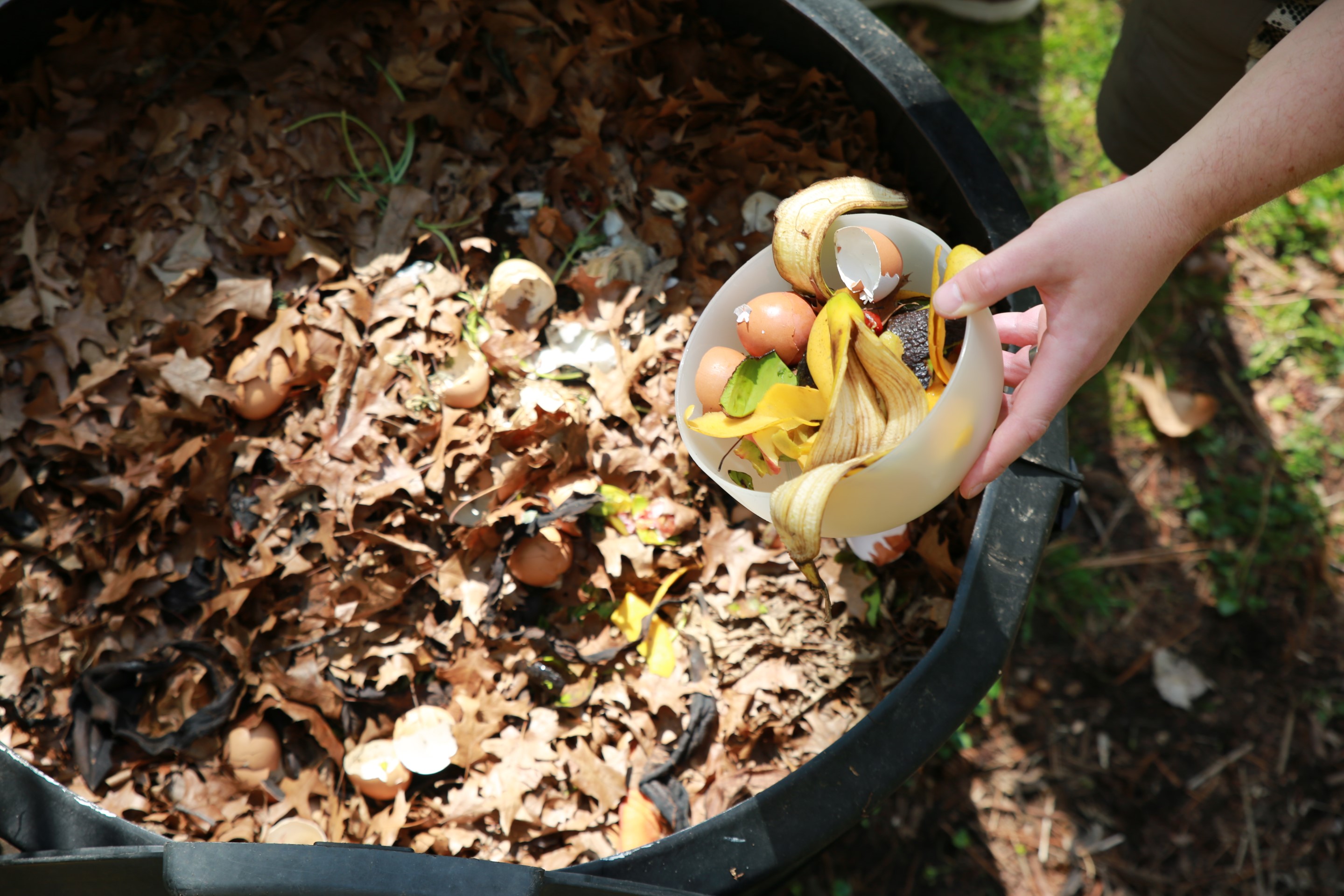
Photo was taken by Minnesota Pollution Control Agency
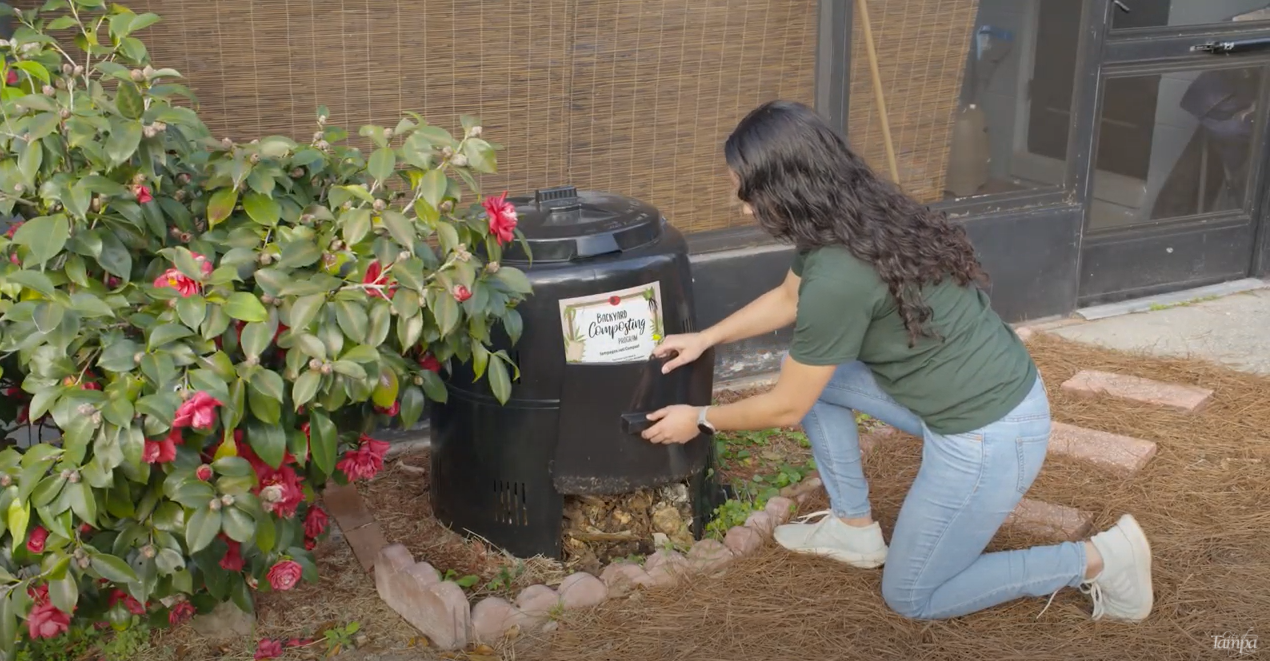
Some common tools recommended for composting include gardening gloves, something to mix the pile with, a garden hose or watering can, and a thermometer. Some common tools used to mix the pile include shovels, hand trowels, pitchforks, or aerators. Which tool is best will vary depending on factors such as convenience, accessibility, and management style.
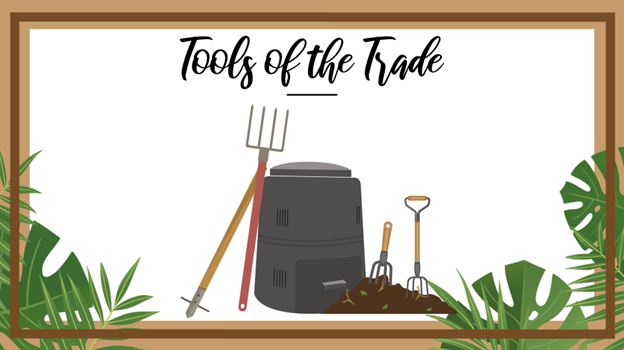
The timeframe is heavily influenced by weather, the type of material added, the size of the materials added, and management style. The more effort that is put into things such as cutting materials into smaller pieces and turning the pile for aeration, the quicker the time frame for creating finished compost.
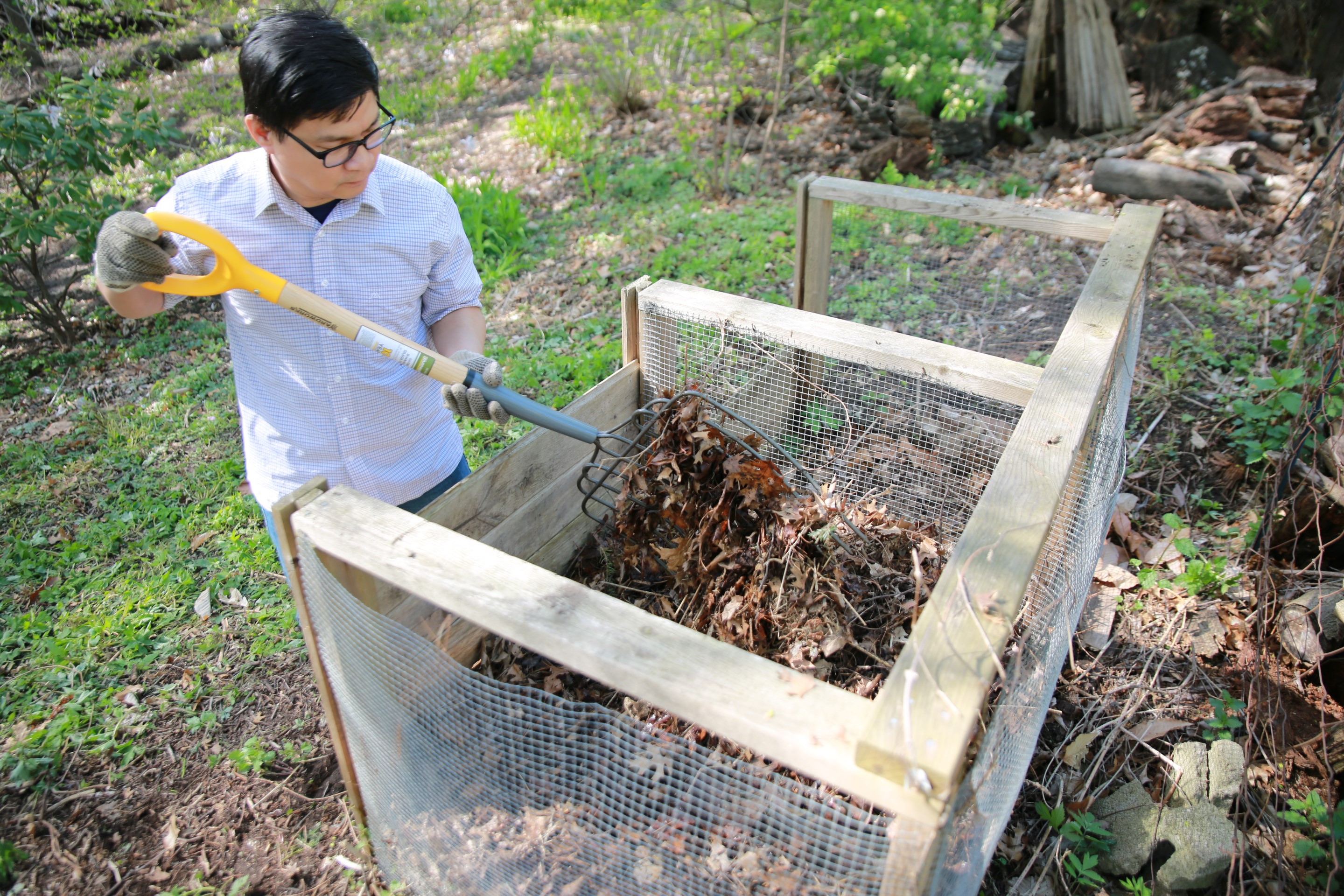
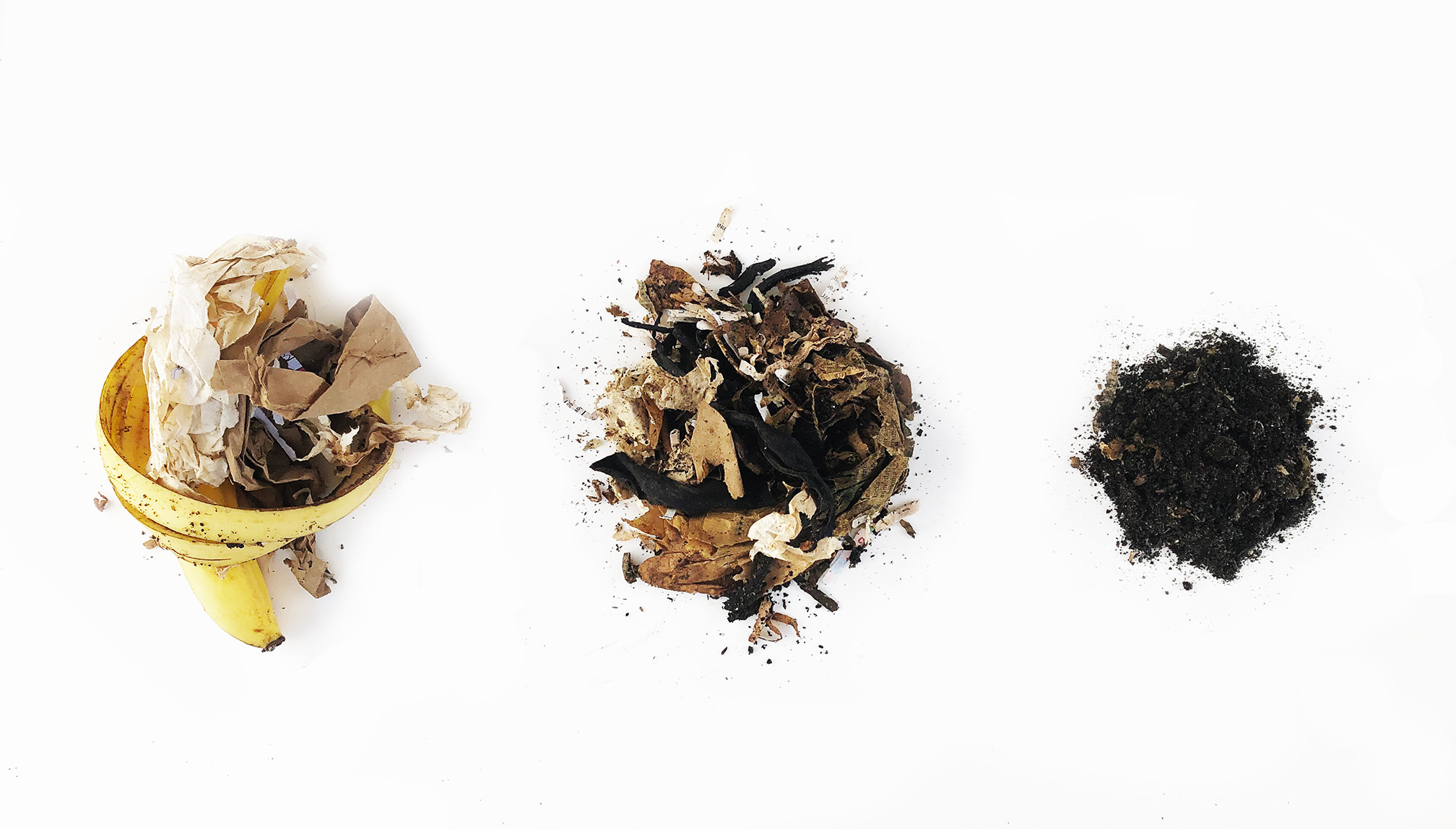
Although not necessary, finished compost can be sifted before application. This allows for the removal of large pieces or clumps which creates a more uniform amendment. Larger pieces can be returned to the compost pile.
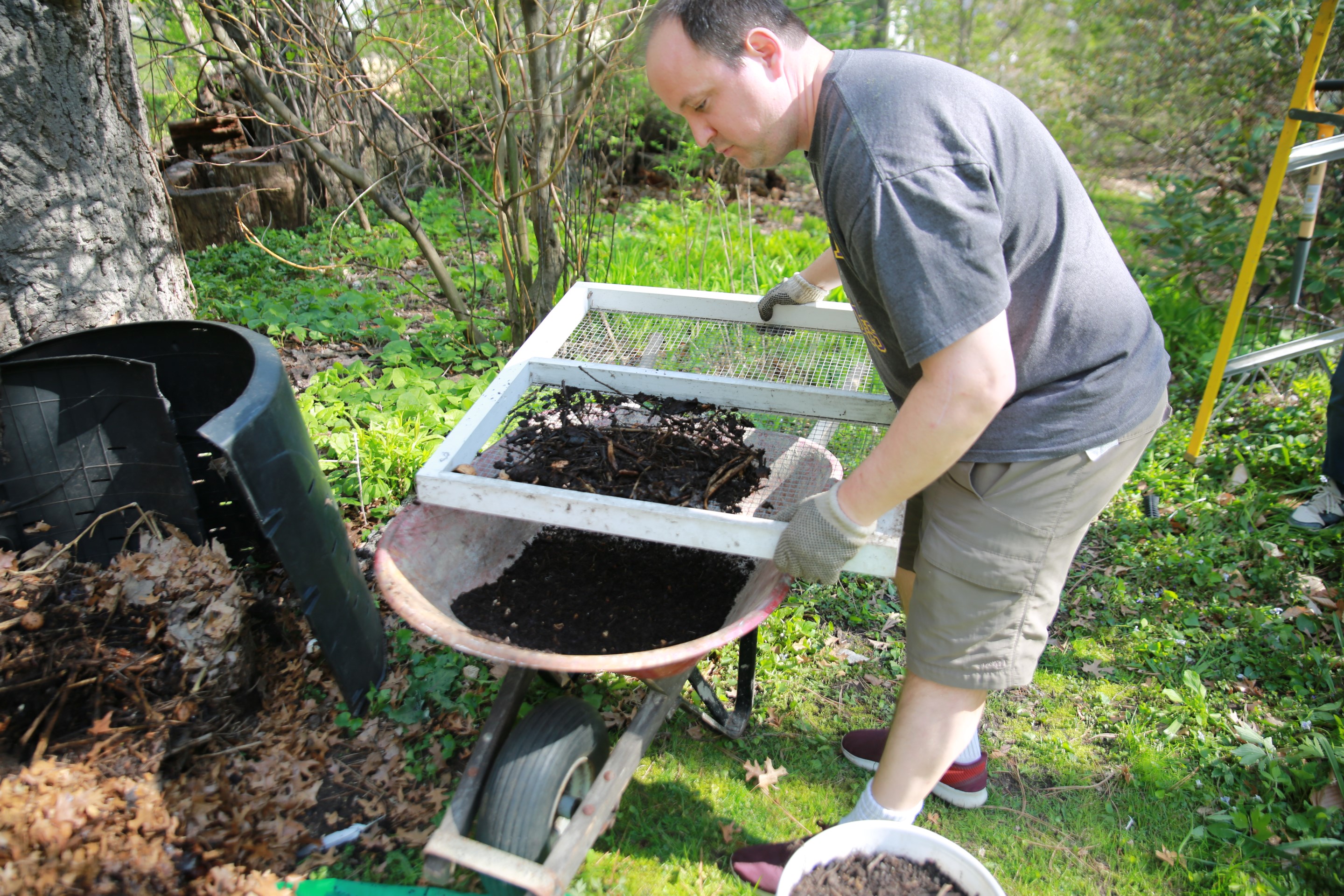
The most effective range is 122-131 degrees Fahrenheit, with the acceptable range being 105-140 degrees Fahrenheit. If the pile is below 100 degrees, turn the pile and add more greens. If the pile is 150 degrees or higher, turn the pile and add more browns.
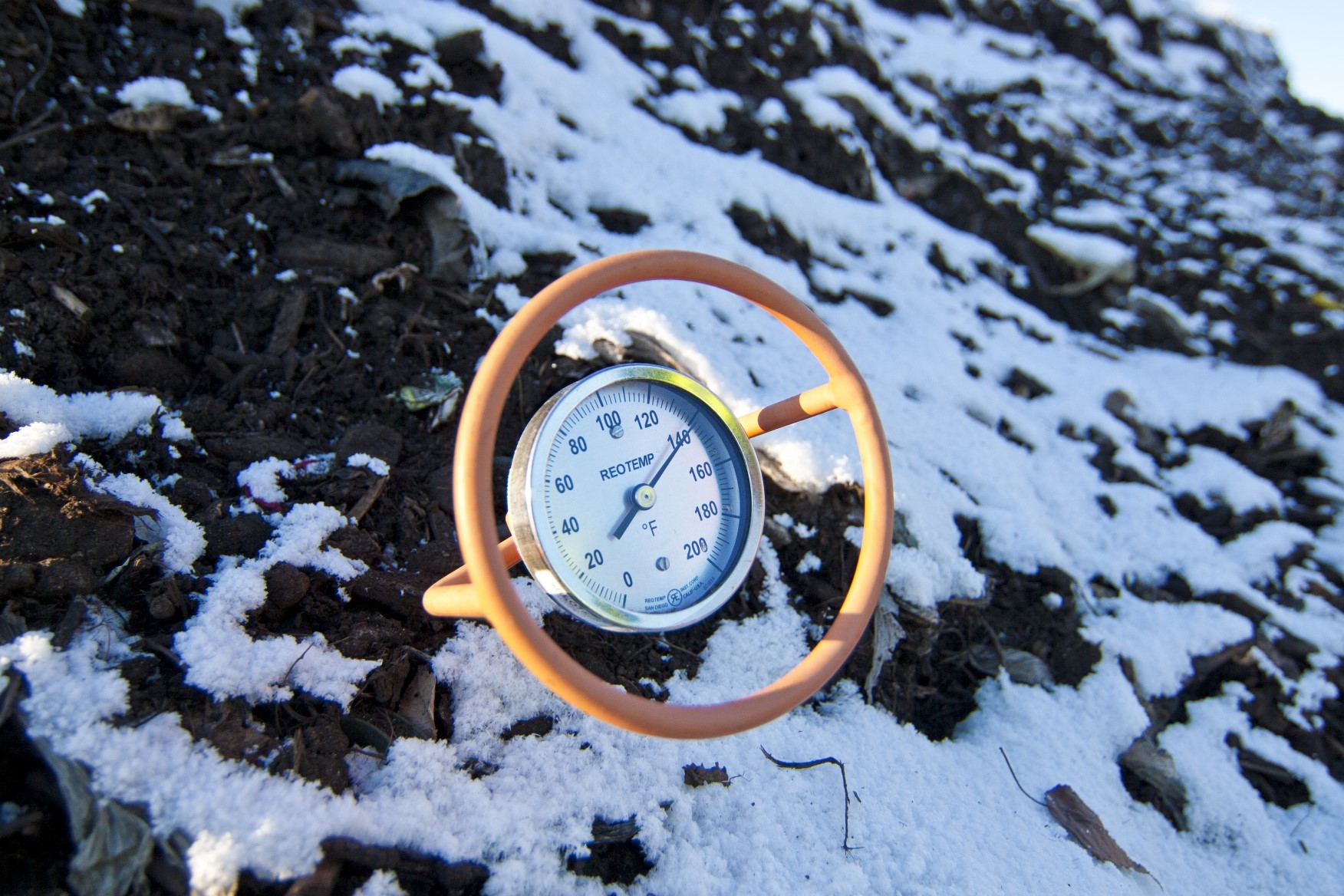
Today the majority of the newspaper industry uses soy-based ink. The Tampa Bay Times made the switch in 1990 when it was still the St. Petersburg Times. The ink from a newspaper is, therefore, safe to add to compost piles.

The consensus on which is better is answered in the same way many sustainability issues are: it depends. Let’s use paper as an example. From a supply chain perspective, eliminating high-quality fiber from the recycling stream might mean more resources need to be used to create new paper products to meet the demand. However, some paper products that are not accepted for recycling could be composted such as shredded paper and used napkins. Composting also eliminates the resources that are required to collect, transport, and process the fibers to create new materials. Although it will depend on the situation, composting is typically a better alternative to recycling, but remember refusing, reducing, and reusing are stronger waste reduction tools. For example, using the same reusable bag at the grocery store has the potential to be a stronger waste reduction tool than getting paper bags and composting them.
Florida’s sandy soils only contain an average of 1-3% organic matter. Adding compost helps to increase that percentage, which will lead to a wide variety of benefits including reducing water and nutrient runoff, stabilizing pH, and providing food for microorganisms.
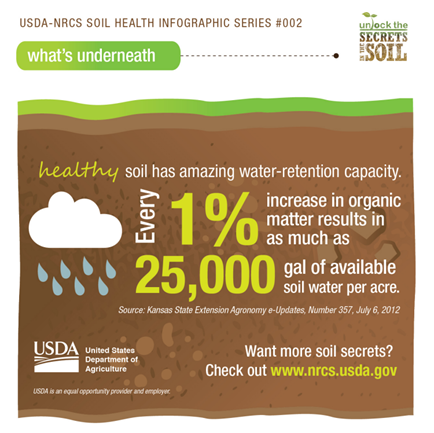
According to Project Drawdown, composting is a climate mitigation solution to reduce and sequester carbon. Although the City’s food waste goes to the McKay Bay Waste-to-Energy Facility instead of being landfilled, reducing the amount of waste to start would save resources and be even more sustainable.
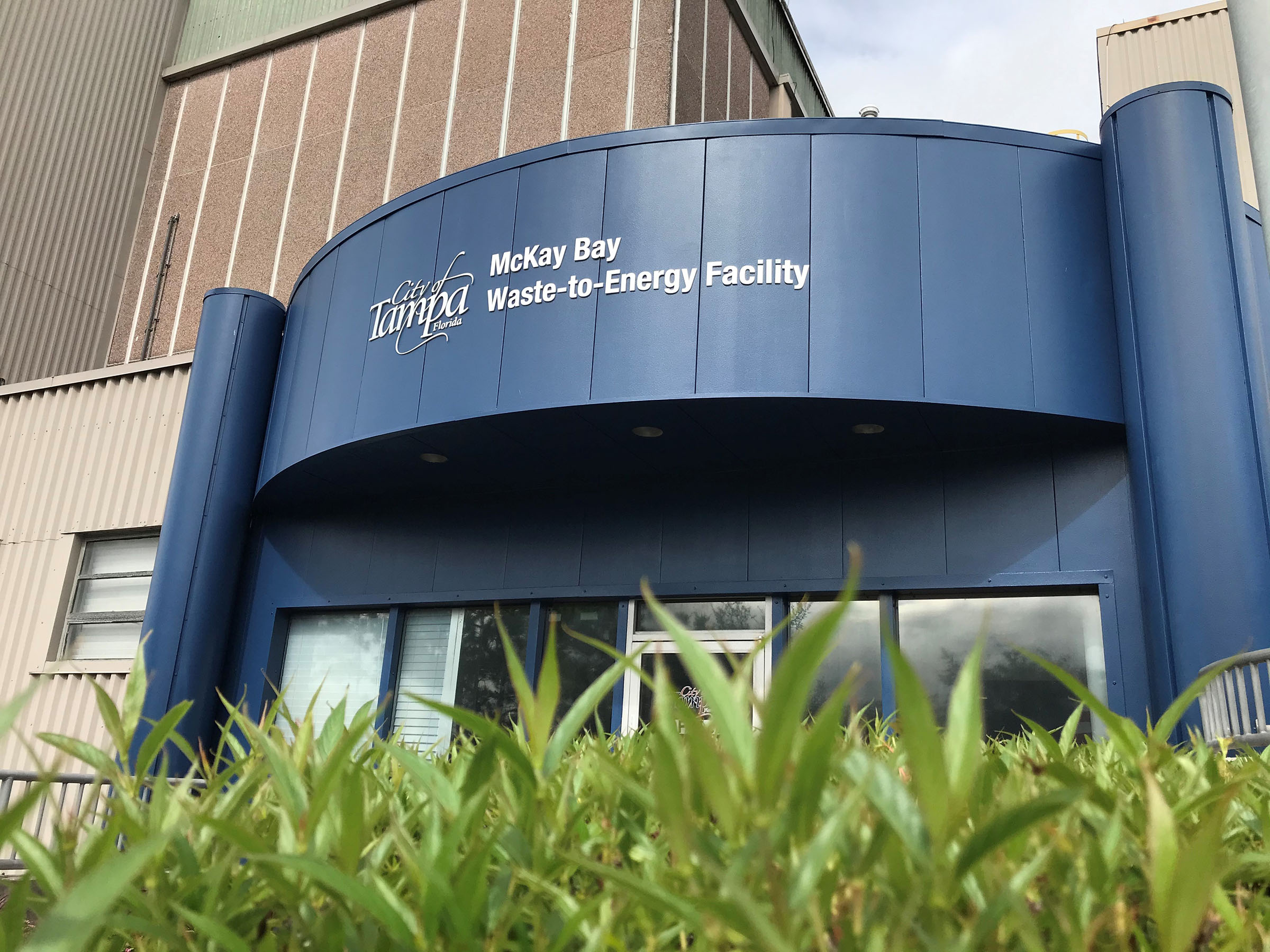
Want more composting resources? Check out these websites
“Compost Tips for the Home Gardener”
UF | IFAS Quick Composting Tutorial